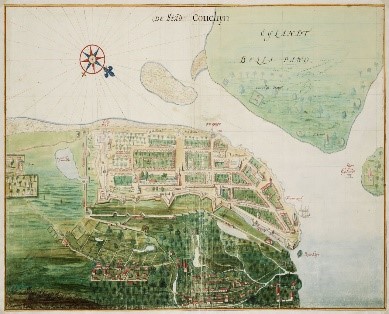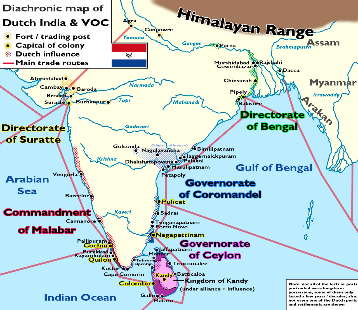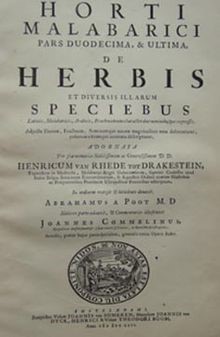In 1663, the Dutch conquered the city of Cochin from the Portuguese. The Portuguese rule was followed by that of the Dutch, who had by then conquered Quilon, after various encounters with the Portuguese and their allies. Dutch Malabar the name of its main settlement in Cochin, was also the title of a commandment of the Dutch East India Company on the Malabar Coast between 1661 and 1795, and was a subdivision of what was collectively referred to as Dutch India. The Dutch presence in the then Malabar region started with the capture of Portuguese Quilon, expanded with the Conquest of Malabar (1658-1663), and ended with the conquest of Malabar by the British in 1795.
The Dutch helped Cochin to get rid of the Portuguese-friendly king. The Portuguese-friendly king was killed in the subsequent battle along with two of his juniors. Cochin royal family appointed a new king and ordered the Dutch to besiege the Portuguese fort. Cochin and the chief of Paliyam provided supplies to the Dutch, who faced heroic Portuguese resistance during the prolonged siege. The Native rulers of Porca and Cembakasseri kept the besieged supplied with provisions. Though disrupted by monsoon rains and the deaths of the ruler of Calicut and important Dutch officers, the garrison finally capitulated on January 8, 1663. The terms of the capitulation were that all the unmarried Portuguese residents were returned to Europe, and all married Portuguese and Mestiços were transferred to Goa. The last governor of Portuguese Cochin was Inácio Sarmento. It was said that about four thousand people were banished and decades of Portuguese supremacy in Malabar came to an end. Fort Cochin now became the primary ally of the Dutch in South Asia.
They possessed military outposts in 11 locations: Alleppey, Ayacotta, Chendamangalam, Pappinivattom, Ponnani, Pallipuram, Cranganore (from 15 January 1662), Chetwai, Cannanore (from 15 February 1663), Cochin (7 January 1663 – 1795), and Quilon (29 December 1658 – 14 April 1659 and from 24 December 1661 – 1795).
The Dutch gradually began to consider their forts and garrisons in Malabar an economic burden, while the British East India Company’s dominance of commerce in Malabar increased. On September 10, 1691, the Dutch transferred Chetwai back to Calicut and reduced the size and strength of their forces across Malabar. The fear of the Cochin-Dutch alliance began to fade in the minds of Calicut rulers. In 1721, the supreme council of the Dutch East Indies in Batavia agreed that it would no longer support its ally Cochin against Calicut, betraying a century-old friendship.
The Dutch never succeeded in establishing a pepper trade monopoly in Malabar and were all the more frustrated in their attempts when the young ruler of Travancore, Marthanda Varma, started to expand his kingdom. The Travancore–Dutch War that followed culminated in the Battle of Colachel, which proved disastrous for the Dutch. Eustachius De Lannoy, a naval commander in the Dutch army, was taken prisoner and subsequently became a commander in the Travancore army. De Lannoy later helped Travancore establish an organized army, introduce better firearms and artillery, and build European-style forts in his state.
As a result of the Kew Letters, Dutch settlements on the Malabar Coast were surrendered to the British in 1795, to prevent them from being overrun by the French. Dutch Malabar remained British after the conclusion of the Anglo-Dutch Treaty of 1814, which exchanged the colony.
Thus, the Dutch can be seen to be more interested in trade, and their attempts at conquest were always centered around trade rather than an attempt to uplift the places they had conquered.
Medicinal Properties of Local Plants





